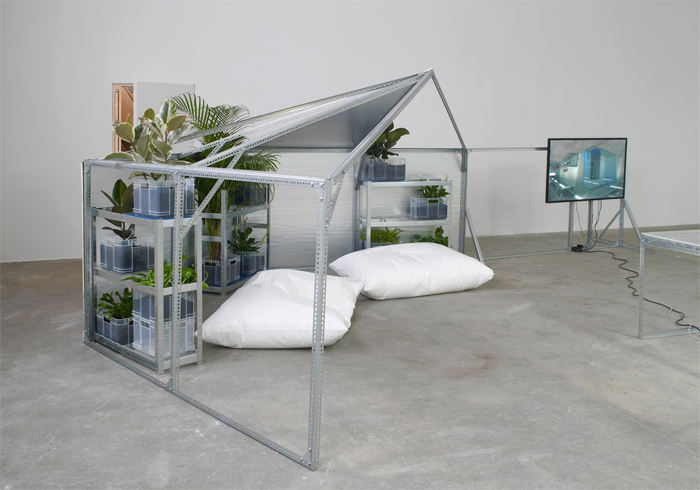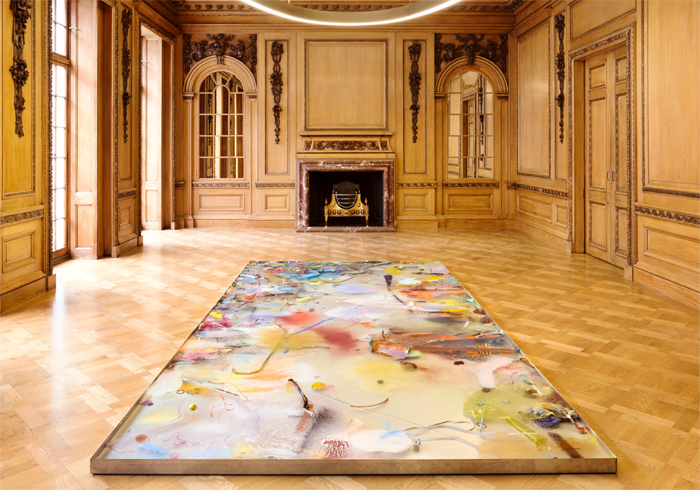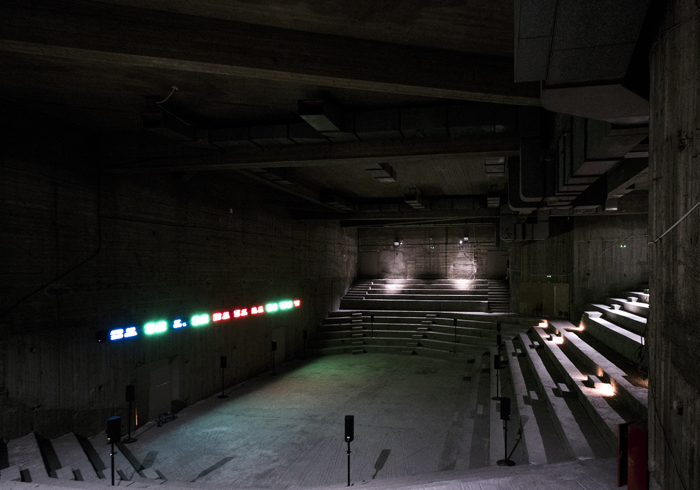Modern Forms is an international, contemporary art collection and editorial platform founded in 2016. Introducing ArtReview’s partnership with Modern Forms, founder Hussam Otaibi and creative director Nick Hackworth talk about how they started working together on Modern Forms, the way the collection has grown and how their commissions and institutional collaborations work.
The interview is the first part of a partnership that includes talks in the ArtReview Bar (the next talk with Marguerite Humeau takes place on 15 December, rsvp here) as well as artist’s films that will be presented on artreview.com from December to February 2018
ArtReview: Can you tell us a bit about how Modern Forms came about?
Hussam Otaibi: I started Modern Forms because I wanted to support something I love. For me the best art connects me to aspects of the world beyond my everyday experience, be it images, ideas or experiences. I think that in these uncertain times the power of creativity to keep us engaged and reinventing the world is more important than ever. I also support the charity Children & The Arts, which works with schools to create cultural experiences that students might not otherwise have access to.

AR: What are the core themes on which you built the collection?
HO: The collection is quite broad, partly because it’s a personal collection, however we are particularly interested in emerging art. Recently we’ve acquired major works by Yuri Pattison, Marguerite Humeau and Beatriz Olabarrieta. One of my favourite works in the collection is Samara Scott’s Lonely Planet II. It’s an extraordinary, living work, a collage/painting that sits in a large, shallow tray of water. We installed in in the boardroom of Floreat’s office – the finance company of which I am partner. We only intended to keep it there for a few months but everyone loved the work so much it stayed for over a year. It started so many conversations. To me it’s a work that’s both quite traditional but very contemporary as well.
Nick Hackworth: Yes, Samara’s work is incredible. It’s like the residue of every party you’ve ever been to coalesced at the bottom of a tray…We installed John Gerard’s extraordinary simulation work Flag (Thames) alongside Lonely Planet II in the boardroom. Both works are acute, visual articulations of contemporary surfaces. Interestingly each work is, formally speaking, the thing-in-itself, as well as being representations. As Modern Forms develops we’re becoming increasingly interested in fostering a series of narratives, articulated in works, talks and projects. Creating coherence and intent for the overall project.

AR: How did you two start working together?
HO: I met Nick at the 2005 Turner Prize through a friend, who suggested he take me round the show. Not being from an art background I was interested to have some of the context of the more conceptual work explained. I remember Nick being pretty critical in both senses of the word…
NH: We met when I was just starting my gallery, Paradise Row. Hussam became a major collector of ours. He’s always had a very direct and joyful connection with art. Hussam tended to love and often acquire our more difficult pieces, amazing works that many collectors would see as impractical. Hussam has brought that openness to Modern Forms, allowing us to be expansive and creatively ambitious.
AR: How do the two of you work together in acquiring work?
HO: I like research, so we have a set process that we go through so that our collecting is focused. We like to look into an artist’s entire practice to make sure we acquire what we feel to be their most significant works. Nick and I discover works and there are other advisors and friends involved. Laetita Catoir, Director at Blain|Southern and one of the founders of 1.54 Contemporary African Art Fair, has a lot of input.
NH: Our colleagues at Modern Forms, Liam Newnham and Nancy Hatcher are also good at bringing younger, emerging artists into the mix.
AR: How is Modern Forms a platform for artists aside from the collection itself?
NH: The platform comprises several elements. We support artists through commissions and institutional collaborations. Currently we’re really pleased to be working closely with the Nigerian sound artist, Emeka Ogboh. We commissioned a new work from him, Ebube Dike that we presented at 1.54 Contemporary African Art Fair in Somerset House and in December we’ll be supporting the Tate’s forthcoming exhibition of his installation The Way Earthly Things Are Going, which we saw at Documenta 14 in Athens. It’s one of the most powerful works I’ve experienced in a long time.

The second part of the platform is online. We use our site as a space to present artists’ films and editorial projects around specific works, themes or ideas. Our video programme is fairly eclectic. We started with a beautifully strange, post-apocalyptic beach film by Hannah Quinlan & Rosie Hastings. Next up will be films by Desiree Dolron and Jonas Mekas. In terms of editorial projects our most extensive cluster of archival content so far centers on The Invisible Men, a major outdoor instillation by Zak Ové, now on loan to Yorkshire Sculpture Park. Our archive maps the context of the work; everything from the films of Zak’s father Horace, the history of carnival culture in Trinidad as a locus for its independence, to the seventeenth century dramatic works of Ben Johnson.
AR: As well as developing the collection, you’re also working on critical projects exploring the ideas of leading thinkers and creatives. What role does this strand of activity have for Modern Forms?
HO: I’ve always enjoyed the fact that contemporary culture is, essentially, a conversation. We’re interested in contributing to that conversation.
NH: As mentioned earlier we’re interested in fostering certain narratives we find particularly compelling. Some of those narratives are intellectual. I think we’re in an interesting moment in intellectual history given the exhaustion of current, seemingly dominant ideologies and we’re starting to explore some developing neo-materialist philosophical positions which I suspect will become increasingly significant in the future.
AR: Can you tell us about the new digital projects that Modern Forms will be unveiling with ArtReview over the next few months?
NH: In December we’ll be presenting a short film we’ve commissioned from Marguerite Humeau centered on her recent work that explores the form and myth of the Sphinx and modern, global security apparatus. We are also working with Jake Chapman on a piece exploring the philosophy of Pessimism.
Hussam Otaibi is a British entrepreneur and Managing Partner of Floreat Group, a private financial group based in London. A long standing art collector, Hussam founded of Modern Forms in 2016. He is also chairman of the charity Children & the Arts
Nick Hackworth is the Creative Director of Modern Forms. Previously he ran Paradise Row gallery, was Art Editor of Dazed & Confused and contemporary art critic of the Evening Standard